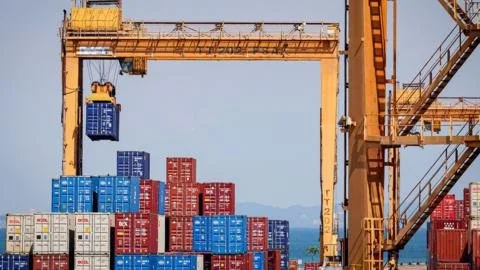The Tariff Storm: How US Policies Are Shaping Global Trade Dynamics
The World Trade Organization (WTO) has issued a stark warning regarding the future of global trade, predicting a decline this year as a direct consequence of US President Donald Trump’s tariffs. The organization highlighted severe downside risks, including the possibility of reciprocal tariffs and ongoing political uncertainty, which could further exacerbate the decline in international trade, particularly in North America, where a drop of more than 10% is anticipated.
Ngozi Okonjo-Iweala, the director general of the WTO, expressed her concerns over the decoupling of the US and China, describing it as a troubling trend. Initially, the WTO expected global goods trade to grow by 2.7% in 2025, but this has now been revised to a 0.2% decrease. According to chief economist Ralph Ossa, tariffs are instruments that can have broad and unintended consequences, stating that trade policy uncertainty significantly hampers trade flows, leading to lower exports and weakening the overall economic activity.
Likewise, the UN Conference on Trade and Development (UNCTAD) also minimized its global growth forecast to 2.3% in 2025 due to escalating trade tensions, falling below the 2.5% mark that is viewed as a warning sign for a potential global recession. The standard tariff of 10% on foreign imports to the US went into effect on April 5, with some countries and goods offered exemptions. In contrast, China imposes even steeper tariffs, averaging 145% on most goods.
As the uncertainty persists, the US stock market experienced declines, with major indexes falling in response to the situation. Despite the projected downturn in US trade, the WTO indicates that some regions, specifically Asia and Europe, may still see modest growth in both exports and imports this year. In a notable first, the WTO included forecasts for the trade in services, expecting it to grow by 4% in 2025, which is still a decline from earlier estimates.
President Trump argues that these tariffs would prompt US consumers to favor domestically produced products, raise tax revenues, and lead to significant levels of investment. However, critics warn that revitalizing US manufacturing is a complex process that could span decades, potentially straining the economy in the interim. Just hours after implementing tariffs on around 60 trading partners, Trump postponed additional tariffs for 90 days, excluding China, due to increasing pushback from politicians and market volatility. Furthermore, the Bank of England’s governor has cautioned that Trump’s tariffs could reduce disposable income for UK consumers.

